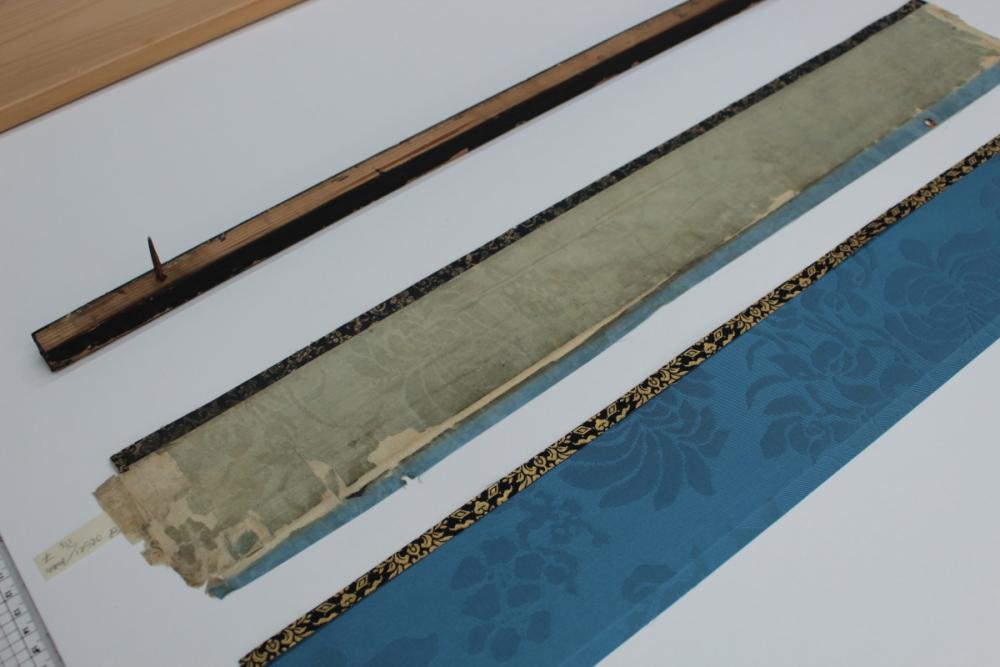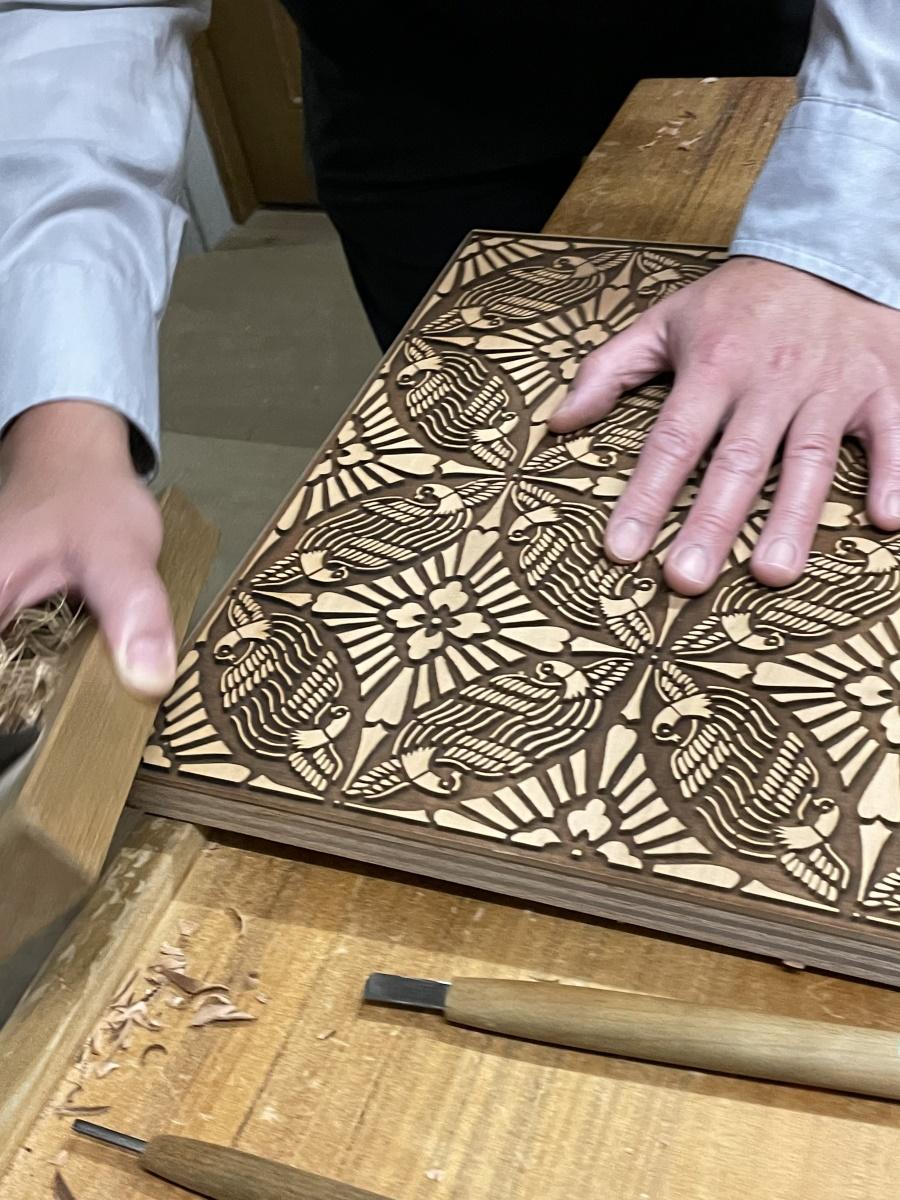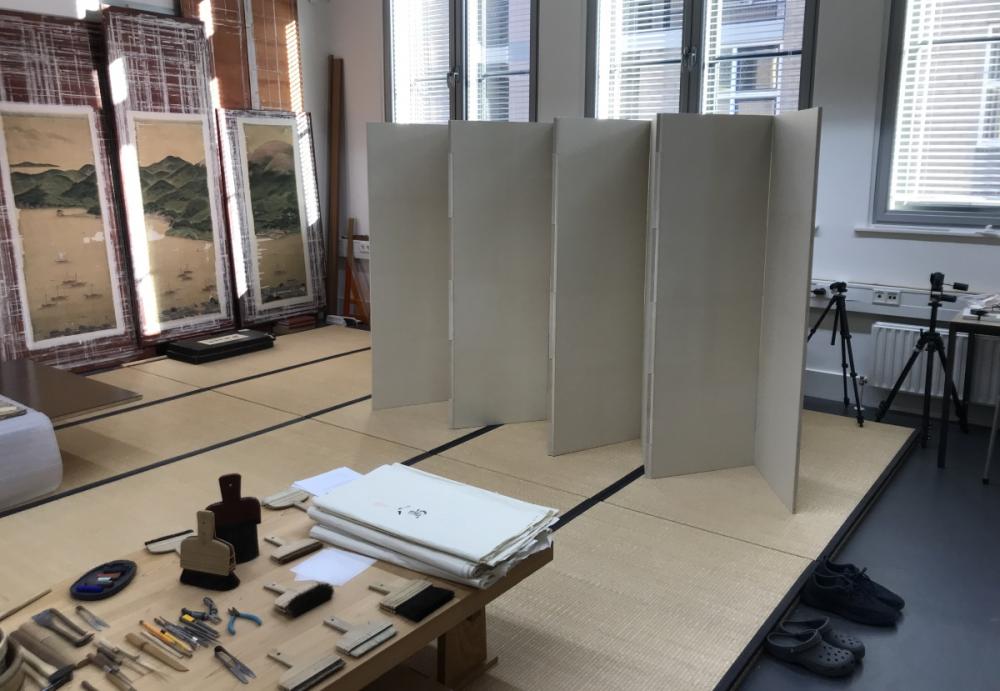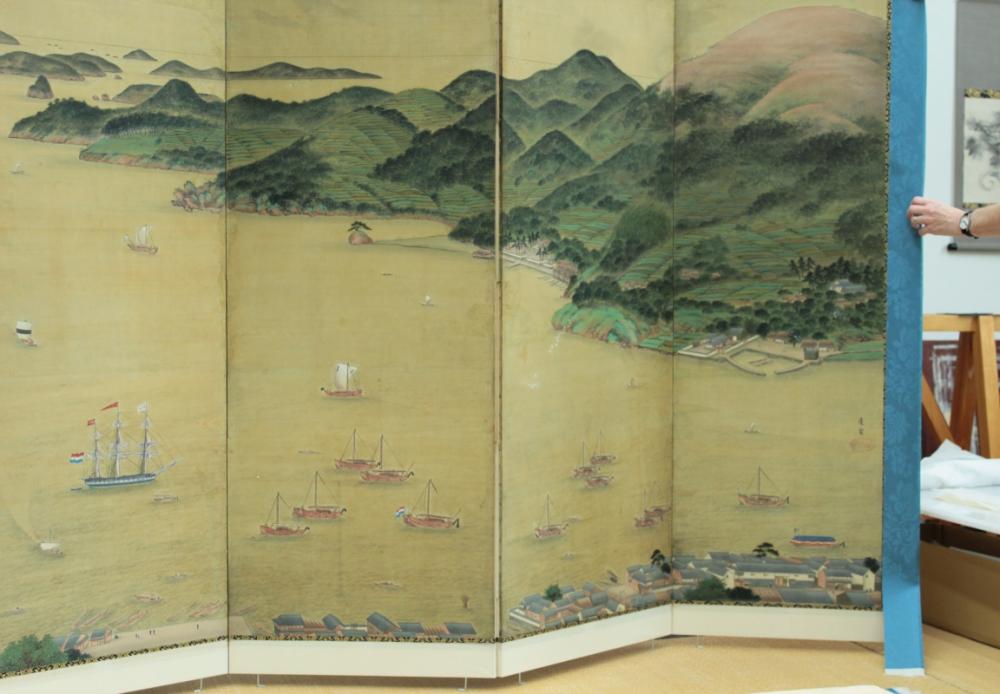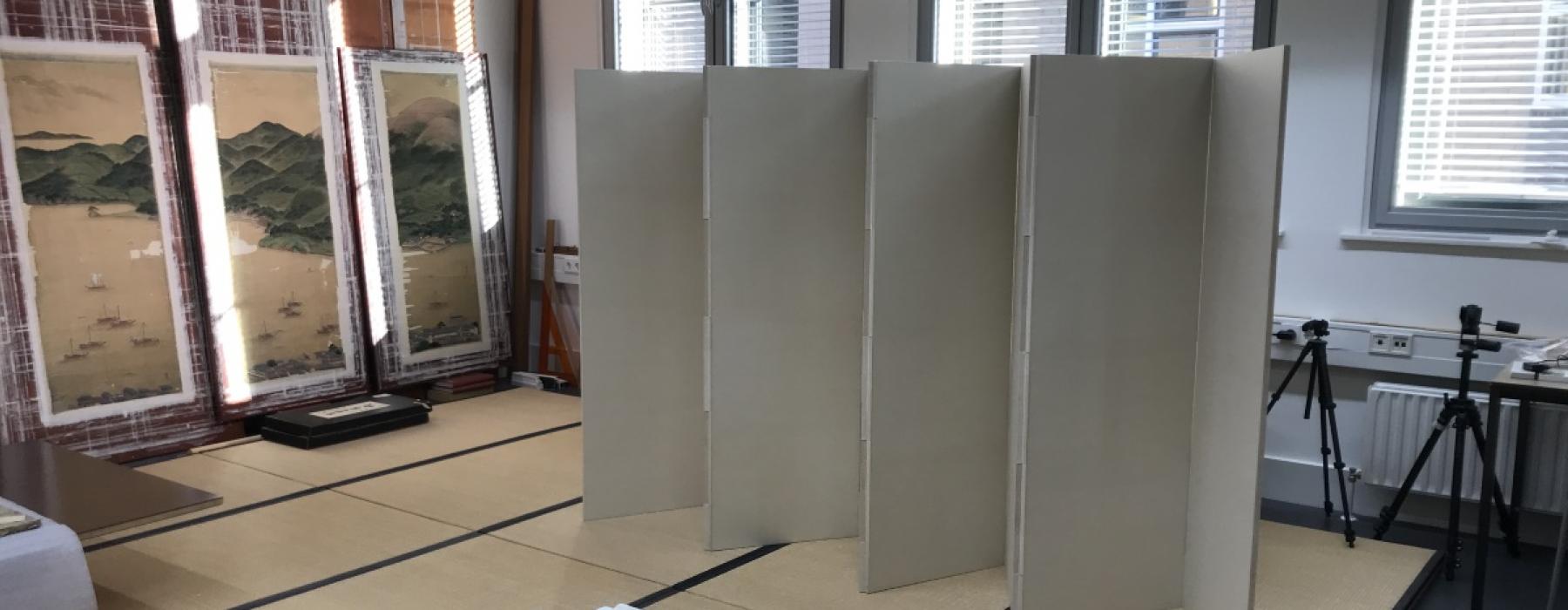
As we mentioned in the previous blog post, a lot of work has been carried out in Japan on weaving the fabric for the wide blue border around the painting, the ōberi. With the help of many, this silk damask has been reconstructed based on the original silk that was mounted around the folding screen as decoration. The pattern could be pieced together section by section, after which a specialized weaver in Kyoto could program a loom. The original colour could be traced back to narrow strips of fabric that were folded around the edges of the screen, and thus had suffered less light damage. The end result is simultaneously tasteful and spectacular.
